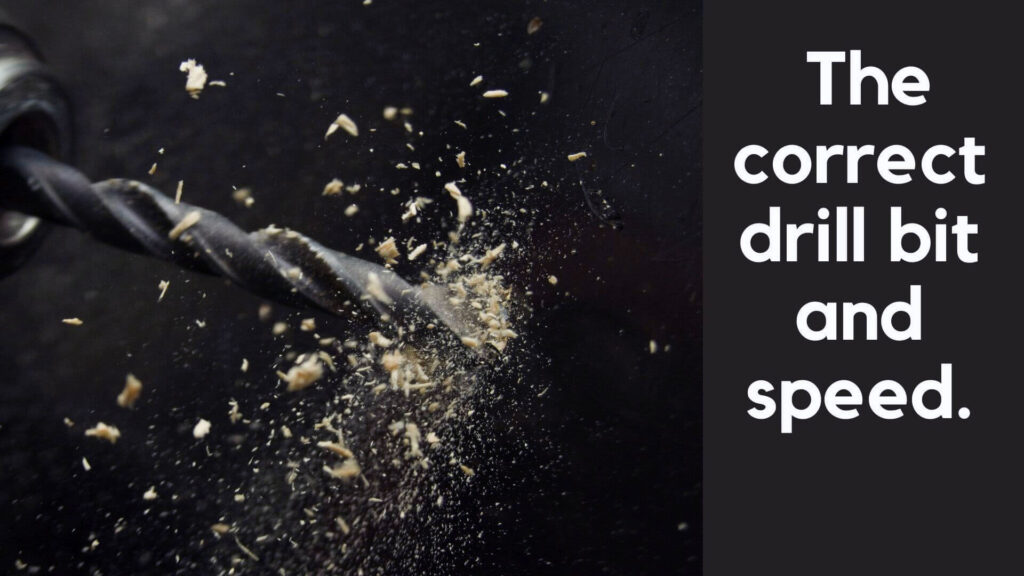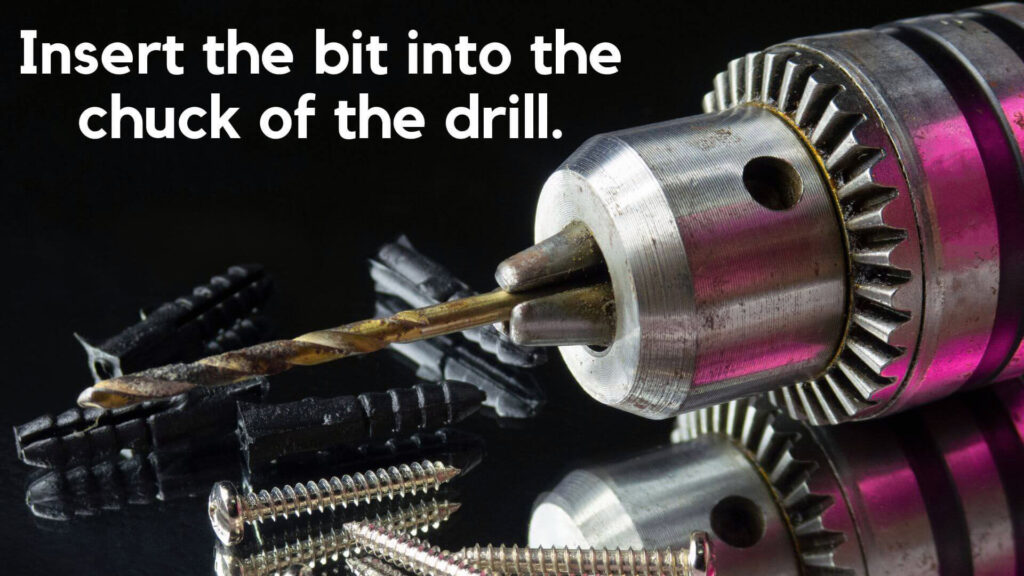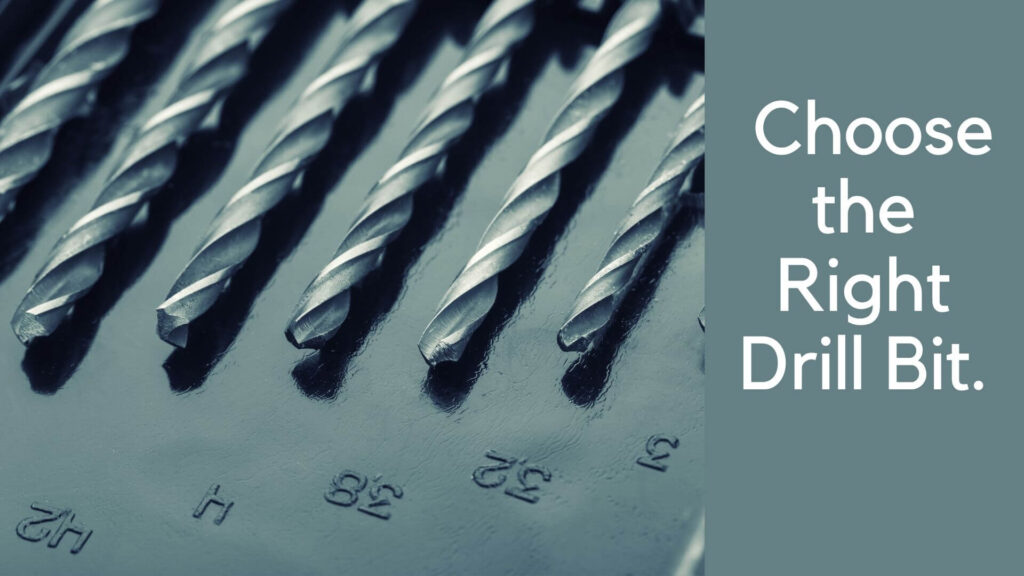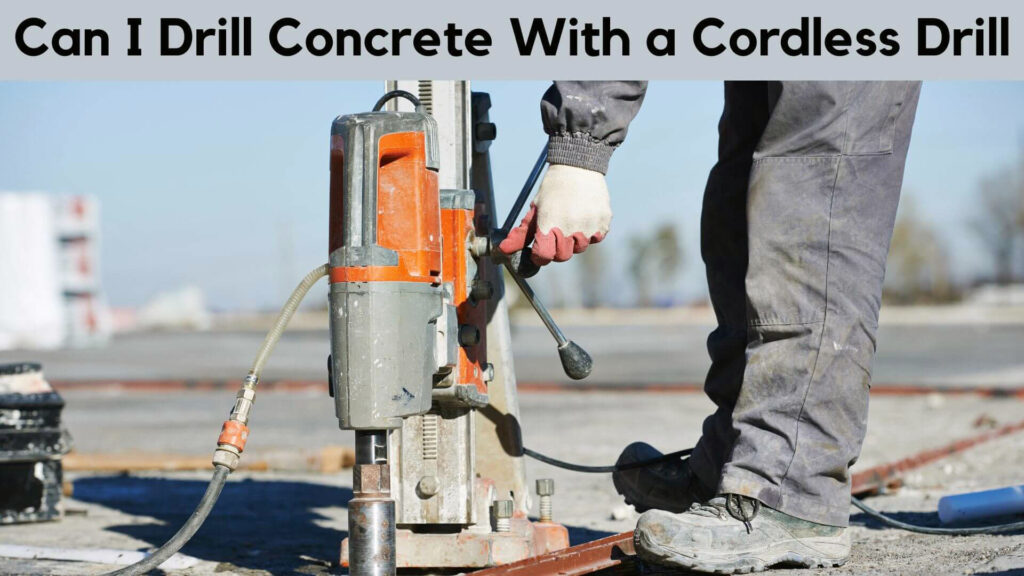If you’re in the market for a good cordless drill that can handle drilling concrete, you may wonder if you can actually do this. After all, cordless drills are meant for use in other applications such as woodworking or even general DIY work.
However, if you want to drill concrete successfully, there are a few things that you need to take into account.
First, ensure that your cordless drill has the correct power rating for this type of drilling. Most cordless drills have a power rating of between 2 and 4 volts, which is more than enough to drill through concrete.
Secondly, ensure your battery is fully charged before starting the drilling process.
If you’re looking for a powerful and easy-to-use drill for your next home improvement project, look no further than the cordless drill.
Cordless drills offer many benefits over their corded counterparts, including greater versatility, easier use, and less likelihood of overheating and damaging the material you’re drilling.
There are different types of cordless drills available to suit your specific needs. Rotary hammer drills are the most potent type of cordless drill and are perfect for drilling large holes.
Impact drills are the next most potent type of cordless drill and are ideal for drilling smaller holes.
Drill drivers are the least powerful type of cordless drill but are still more than adequate for most home drilling projects.
When choosing a drill bit, select one that is appropriate for the material you’re drilling and the size of the hole you need to drill.
If you’re unsure of what type of drill bit to use, consult with a professional or read the instructions that came with your drill.
Table of Contents
The Benefits of Drilling Concrete With a Cordless Drill.
Cordless drills are more versatile and easier to use than their corded counterparts.
Cordless drills offer several advantages over their corded counterparts. They are more versatile because they can be used anywhere without needing an electrical outlet. Cordless drills are also easier to use since there is no cord to get tangled up or in the way.
Cordless drills are less likely to overheat and cause damage to the material you’re drilling.
Since cordless drills don’t have a power cord, they are less likely to overheat and cause damage to the material you’re drilling. This is especially important when drilling concrete, as overheating can cause the drill bit to break or shatter.
Cordless drills are more compact and lightweight, making them ideal for maneuvering tight spaces.
Another advantage of cordless drills is that they are more compact and lightweight than their corded counterparts. This makes them ideal for maneuvering in tight spaces, such as between studs in a wall or under a sink.
The Different Types of Cordless Drills.
Rotary hammer drills are the most potent type of cordless drill, making them ideal for drilling large holes.
Rotary hammer drills are the most potent type of cordless drill on the market, making them ideal for drilling large holes. These drills use a rotating hammer to pound the drill bit into the material, which makes them perfect for drilling through rigid materials like concrete.
Rotary hammer drills also have a chisel function, which can break up larger concrete pieces.
Impact drills are the next most powerful type of cordless drill and are perfect for drilling smaller holes.
Impact drills are the next most powerful type of cordless drill and are perfect for drilling smaller holes. These drills use an impact mechanism to drive the drill bit into the material, which makes them ideal for drilling through softer materials like wood.
Impact drills also have a Hammer Drill setting, which can drill more giant holes in stricter materials like concrete.
Drill drivers are the least powerful type of cordless drill but are still more than adequate for most home drilling projects.
Drill drivers are the least powerful type of cordless drill but are still more than adequate for most home drilling projects.
These drills use a rotational force to drive the drill bit into the material, making them ideal for drilling through lighter materials like plastic and metal. Drill drivers also have a screwdriver set which can be used to drive screws into various materials.
Read More: Cordless Drills Under 50 Dollars!
How Do I Drill Concrete With A Cordless Drill?
Step 1: Choose the correct drill bit and speed.

When drilling concrete, it is essential to use the correct drill bit and speed. A good rule of thumb is to start with a bit one size smaller than the hole you plan to drill and then increase the speed as needed. Using a cordless drill, use the correct battery type and charger for your tool.
Step 2: Insert the bit into the chuck of the drill.

If you are using a cordless drill, it is essential to be aware of the power rating of the drill. Most cordless drills have a maximum power of 1,000 watts.
If you attempt to drill concrete with a cordless drill with a power rating of 1,000 watts, you may damage the drill and/or the concrete.
If your cordless drill has a lower power rating, use the appropriate bit for drilling concrete and exercise caution when drilling.
Read More: Removing Chuck from Cordless Drill Quick And Easy
Step 3:Turn on the drill and hold the bit steady as you apply pressure to the trigger.
A cordless drill is an excellent tool for drilling concrete. The drill has a bit that spins and creates a hole in the concrete. When you hold the bit steady and turn on the drill, the bit will quickly create a hole in the concrete.
Step 4: Drive the bit into the concrete until it reaches the desired depth.
- If the bit is not in the concrete at the desired depth, use a hammer to hit the bit repeatedly.
- Once the bit is in the concrete, keep your hand close and use your other hand to guide and power the drill.
- Use a slow speed so that you do not over-drive the bit.
- Using a hammer, use gentle taps until you reach your desired depth.
Step 5: Stop the drill and remove the bit by hand.
If the drill bit is stuck in the concrete, first try to stop the drill by holding the trigger down. If this doesn’t work, remove the bit by hand. If the bit is too tight to remove with your hands, you can use a wrench or pliers to loosen it before removing it.
How to Choose the Right Drill Bit.

The type of drill bit you need will depend on the material you’re drilling and the hole size you need to drill.
There are a few factors to consider when choosing the right drill bit for your project. The most crucial factor is the material you’ll be drilling into. For example, soft materials like wood can be drilled with standard twist bits, while more complex materials like concrete or metal require masonry or carbide-tipped bits.
Another essential factor to consider is the hole size you need to drill. Smaller holes can be drilled with smaller bits, while larger ones require more significant ones.
If you’re unsure of what type of drill bit to use, consult with a professional or read the instructions that came with your drill.
It’s always better to err on caution when drilling, so if you’re not sure which bit to use, it’s better to ask for help than to risk damaging your material or your drill.
Now that you know more about choosing the right drill bit, let’s move on to safety tips.
What are The Risks of Using a Cordless Drill for Concrete Drilling?
There are several risks associated with using a cordless drill for concrete drilling.
- First, if the drill is not maintained correctly, it could overheat and cause a fire.
- Second, if the drill is misused, it could break and cause serious injury.
- Finally, if the cordless drill is stolen, it could be used to damage other property or to commit a crime.
How Can I Properly Use a Cordless Drill for Concrete Drilling?
To use a cordless drill for concrete drilling effectively, follow these tips:
1. Always wear safety gear, including a safety helmet and eye protection.
2. Keep the drill adequately maintained by regularly cleaning the barrel and gears with a proper lubricant.
3. Use the correct bit for the type of concrete being drilled, and use a sharp drilling tool to avoid damage to the concrete.
4. Keep your hands well-protected, especially when using the rotary or drill hammer.
5. Always keep a spare battery on hand in case of emergencies.
Using a cordless drill for concrete drilling is safe if used properly, but always take precautions to avoid injury and maintain your tools so they will last longer.
Check Also: Some Awesome Drills for Concrete Walls.
FAQS About Can I Drill Concrete With a Cordless Drill
What is the best way to drill into concrete?
The best way to drill into concrete is to use a diamond core drill bit.
What type of drill bit should I use to drill through concrete?
A masonry or concrete drill bit is an excellent general-purpose drill bit.
A masonry drill bit is designed to drill through softer materials like brick, concrete, and mortar.
A concrete drill bit will cut through the more complex materials like concrete, brick, and block.
Can you use a cordless drill to drill into stone?
Theoretically, you would need to buy a masonry drill bit.
Final Fate
In conclusion, cordless drills offer many benefits over their corded counterparts and are the ideal choice for most home drilling projects.
When choosing a cordless drill, select the suitable model for the job and always follow safety precautions to avoid injury.

Hey, I am Shihab Uddin, I’m a huge fan of DIY crafts. My workshop is where I spend most of my spare time, and I’m always working on some project. To that end, I’d like to share some of my knowledge and experience with you in power tools, woodworking, and other specialized materials fabrication.
I will guide you with genuine knowledge that can assist you with deciding whether a drill is appropriate according to your requirements or not. If you want to find the best drill and know which type of drill is most suited for your needs, then I can guide you with my expertise. My passion lies in helping others find the correct products they need at an affordable price.


